News
23 September 2024
Inaugural address Alex de Rijke: A wood taxonomy for a carbon tax economy
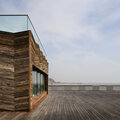
The world’s oldest and most used building material is now fashionable again, after a period of over 250 years of being ignored or scorned. After 25 years of personally trying to persuade the profession, clients and industry to use wood for many reasons, professor Alex de Rijke finally sees it emerging, ‘like Phoenix from the ashes of a coal fire’. De Rijke will deliver his inaugural address ‘A wood taxonomy for a carbon tax economy’ on Friday 25 October.
13 February 2024
Project Real Versus Digital awarded
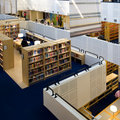
National libraries, such as the KB, National Library of the Netherlands, have been working on digitising their collections for years. Due to rising energy use and the cost of digital infrastructures, libraries are under increasing pressure to reduce their energy use and emissions whilst ensuring maximum usability and accessibility.
01 November 2023
Alex de Rijke appointed Professor of Timber Architecture
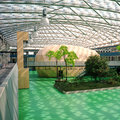
As a child he loved making treehouses. As an architecture student he admired structures in timber most of all. He started out as a practitioner by redesigning and rebuilding his mother’s house, using discarded plywood. “That made sense because I needed material, didn’t have any money and couldn’t bear waste.” As of November 2023, Alex de Rijke is professor of Timber Architecture at TU Delft Faculty of Architecture and the Built Environment.
17 July 2023
TU Delft launches online course Sustainable Building with Timber
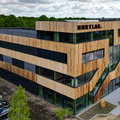
“The way we construct our buildings needs to change.” says Arjan van Timmeren professor of Environmental Technology & Design at TU Delft. Over 35% of our global greenhouse gas emissions are attributable to the built environment. A third of that amount is specifically related to the production of abiotic (non-renewable) materials such as concrete, metals and plastics. The associated challenges are not only climate related, but also concern resource scarcity, health and housing provision.
07 April 2023
Open technology laureate for ‘UPCAST GLASS: Upcycling waste glass by casting’

Glass recycling provides opportunities for recovering materials and reducing production energy demand, but most non-container glass is currently down-cycled or landfilled at end-of-life, because glass production processes cannot accommodate the contamination and compositional variations of waste glass streams.
12 January 2023
Second life for healthcare buildings by redesign
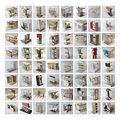
Professor Thijs Asselbergs is advocating architect John Habraken's Open Building (Open Bouwen). "This way of building has a positive impact on circularity, adaptability and also promotes user influence." Following the case to renovate the Amsterdam UMC, Asselbergs was interviewed on the subject by FMTHealthcare.
16 December 2022
Digital citizen engagement with heritage – an EHT podcast
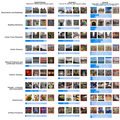
In an EHT podcast researcher Nan Bai explains how social media can help to understand citizens’ engagement with heritage sites. In response to Bai, Inez Weyermans of the City of Amsterdam’s heritage department, provides her views on dilemmas concerning the appreciation of Amsterdam’s famous Canal ring area.
25 October 2022
What will indoor climate systems of the future look like?
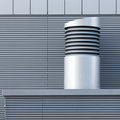
The corona pandemic, summer heat, high gas prices... the indoor climate has been getting a lot of attention in recent years. Atze Boerstra, Professor of Building Services Innovation at TU Delft, specialises in technologies that control the indoor climate. On 11 November, he will deliver his inaugural speech on the topic: Indoor Climate Systems Design in Times of Uncertainty.
05 October 2022
Patent for invisible fully reversible fool-proof connection system

How to develop a new connection system for vertical components that allows for an easy assembly and disassembly while being visually unnoticeable? Such a demountable mechanical connection system is important in order to increase the reuse and recycling of building materials and components in construction.
16 May 2022
Welded glass: optimal transparency, but architectural challenging

Connecting sheet glass using heat bonding can theoretically result in perfectly transparent structures. But are they also manufacturable and are they strong enough? After countless fracture tests, PhD student Lisa Rammig concludes that welding and lamination can provide very high transparency and strength. But application in architecture is challenging.